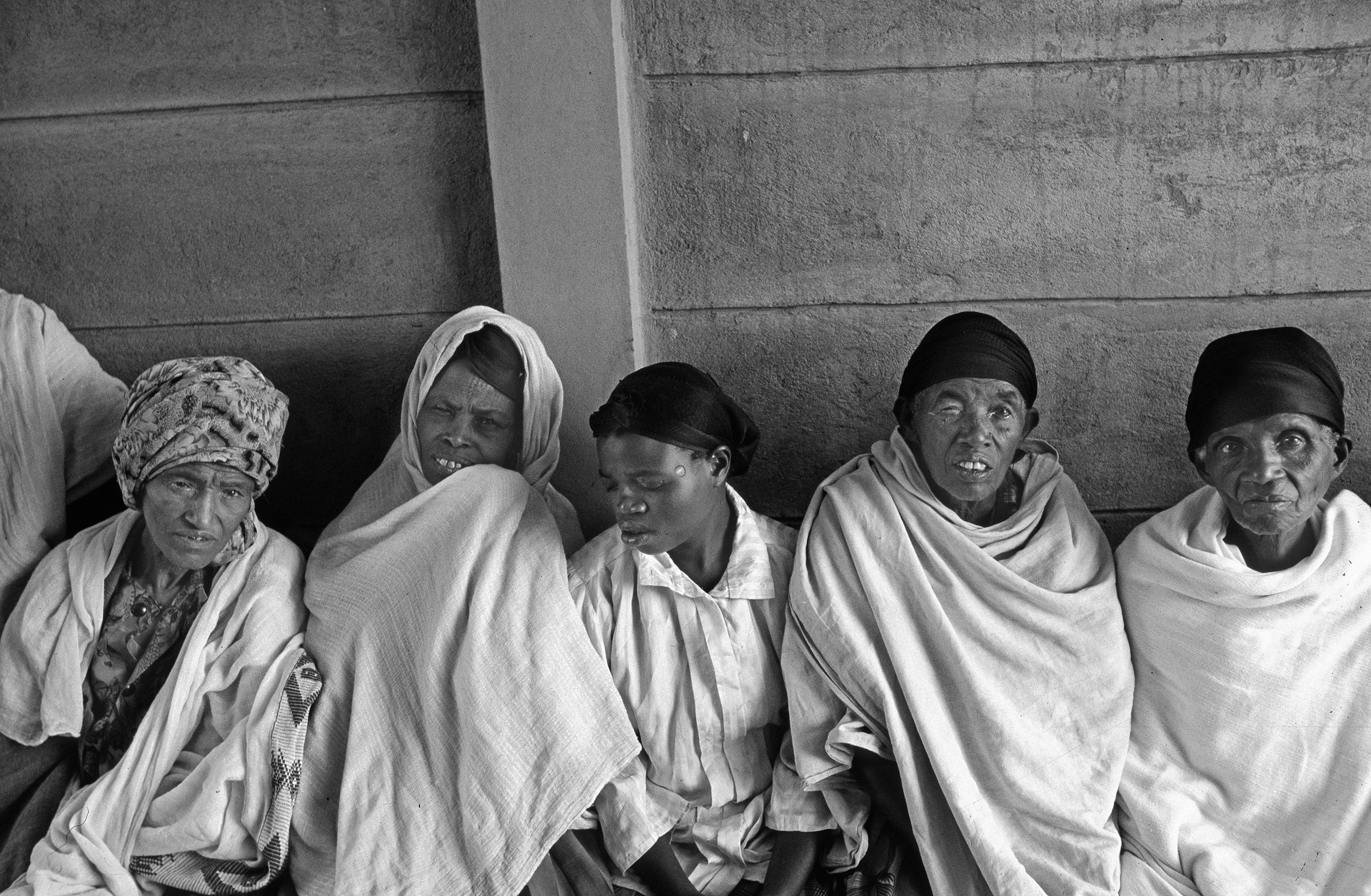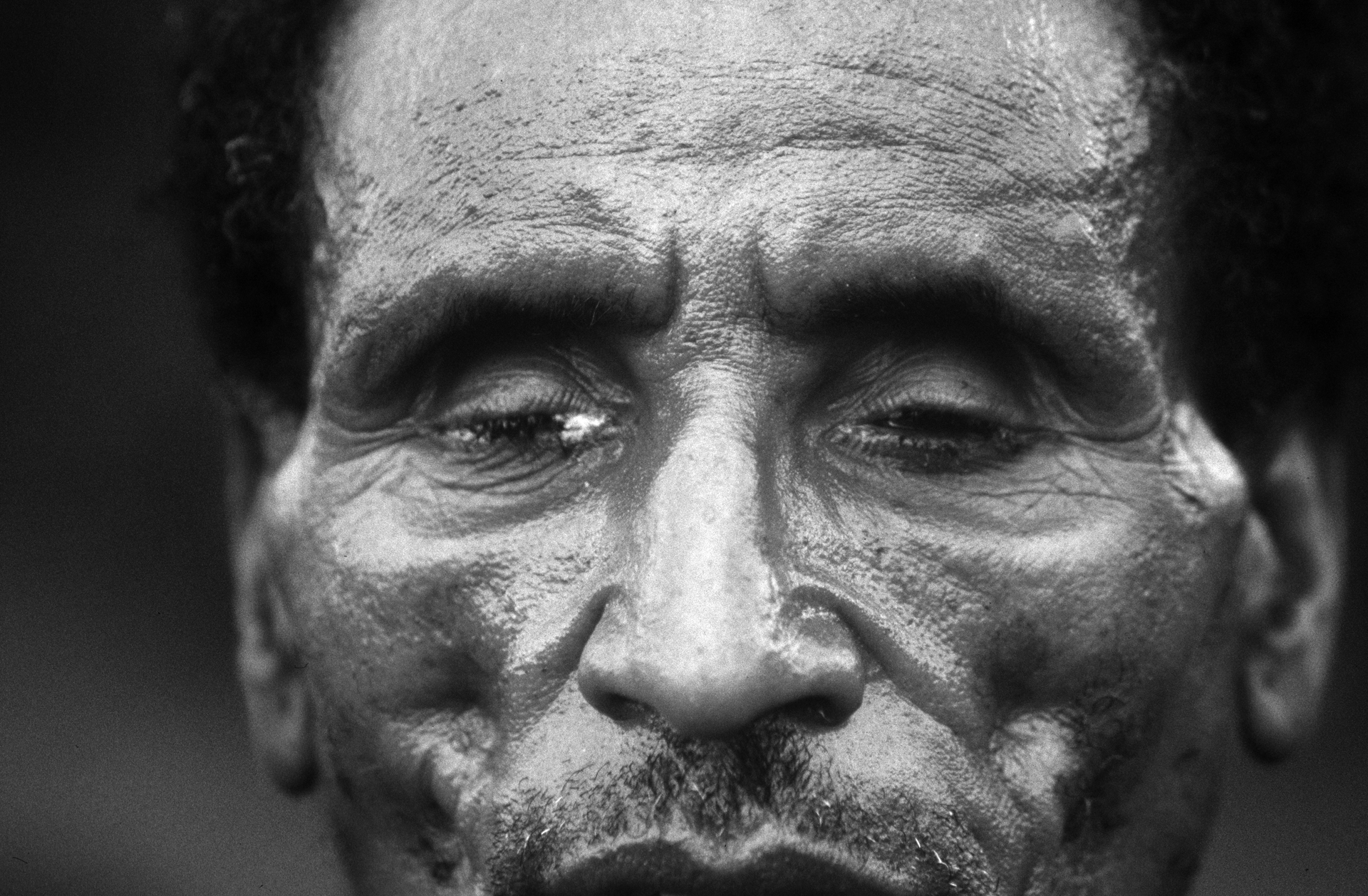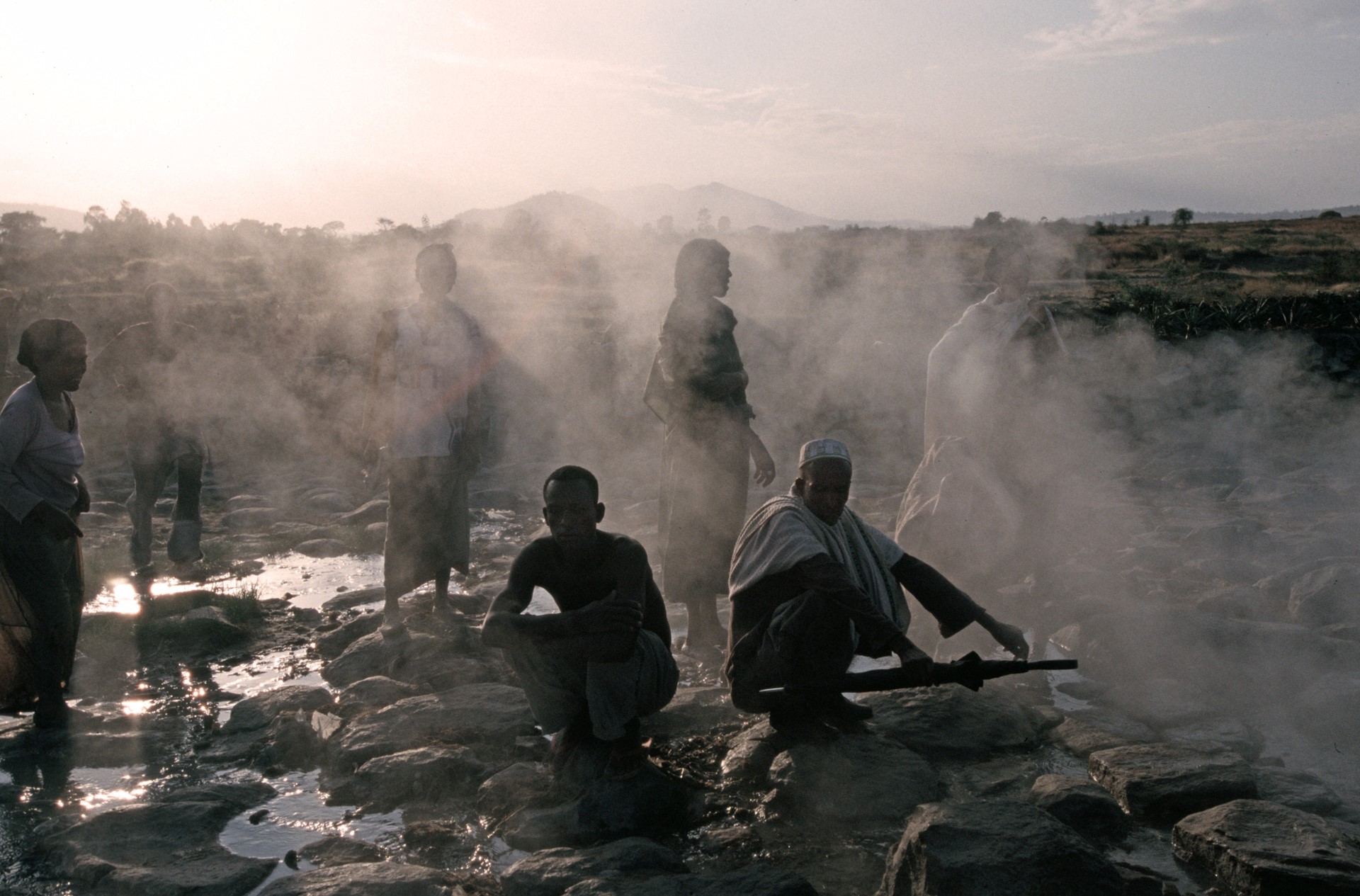0%

On The Road to Soddo: Ethiopia leads the world in blindness and eye impairment. Trachoma is endemic in the districts of Soddo, Alaba, and Gurage, where these photographs where taken during December, 2006. Hospitals and field clinics are few and far between. While community wells and latrines are continually being dug, many people carry water often many kilometres to homes with no latrines. Blindness here means a life of destitution and begging.
The world health organization estimates there are 37 million blind people and 124 million visually impaired people worldwide. Trachoma is the world’s leading cause of preventable and treatable blindness. This documentary photography presentation was supported by Orbis Canada and the Canadian International Development Agency (CIDA), both of which support medical, water, and sanitation projects in Ethiopia.
A mega highway project funded by the World Bank using Chinese contractors proposes to build and upgrade blacktop highways in a country where most of the population doesn't wear shoes.
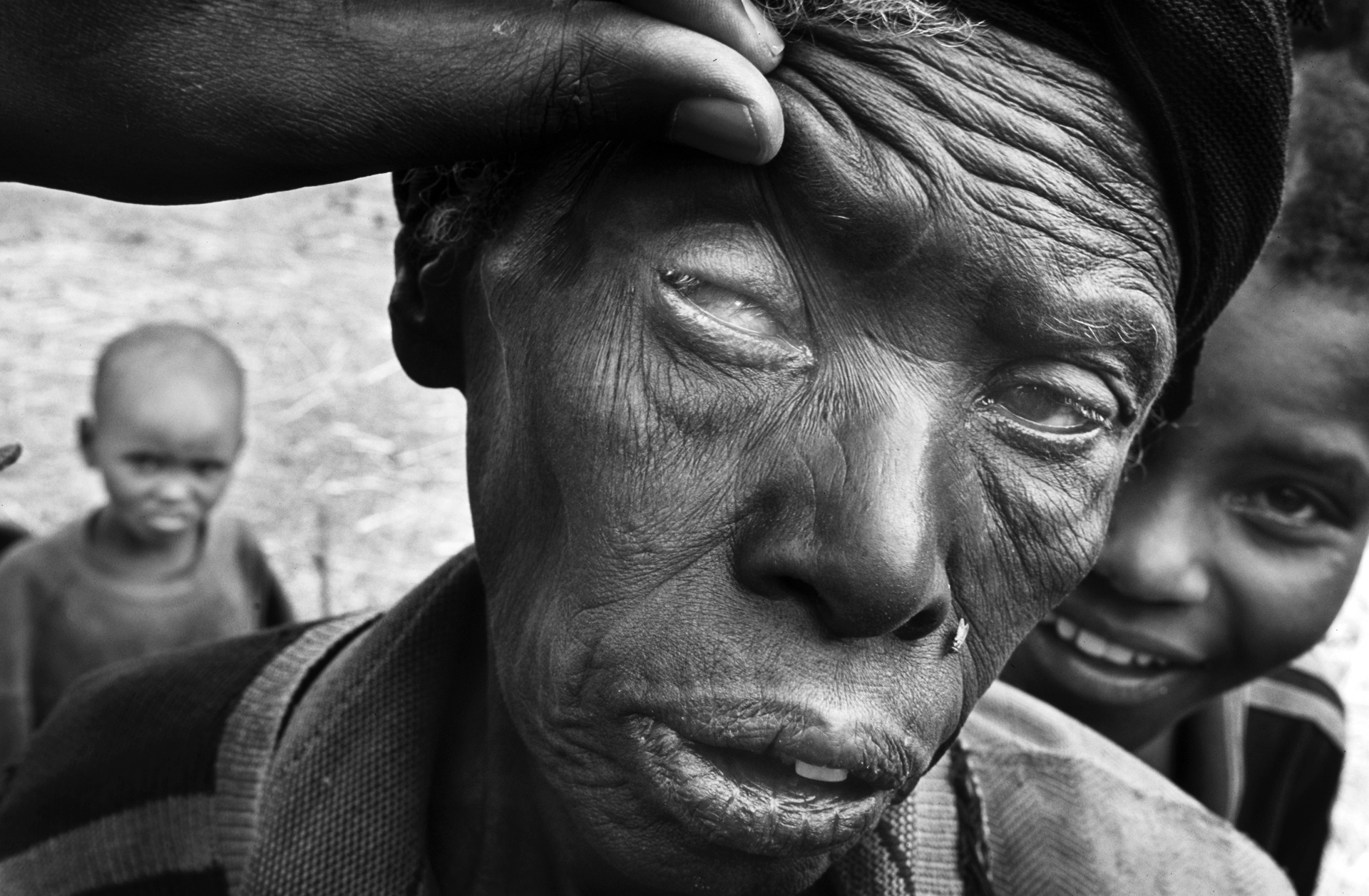
Asra Tsakik, the Field Coordinator for Orbis International checks the eyes of Workete Gujama.
Trachoma is a contagious bacterial infection caused by the bacterium Chlamydia trachomatis. Workete's corneas have scarred over as a result of an advanced complication of trachoma called trachomatous trichiasis, which turns the eyelashes inward to scratch and scar the cornea with every blink.
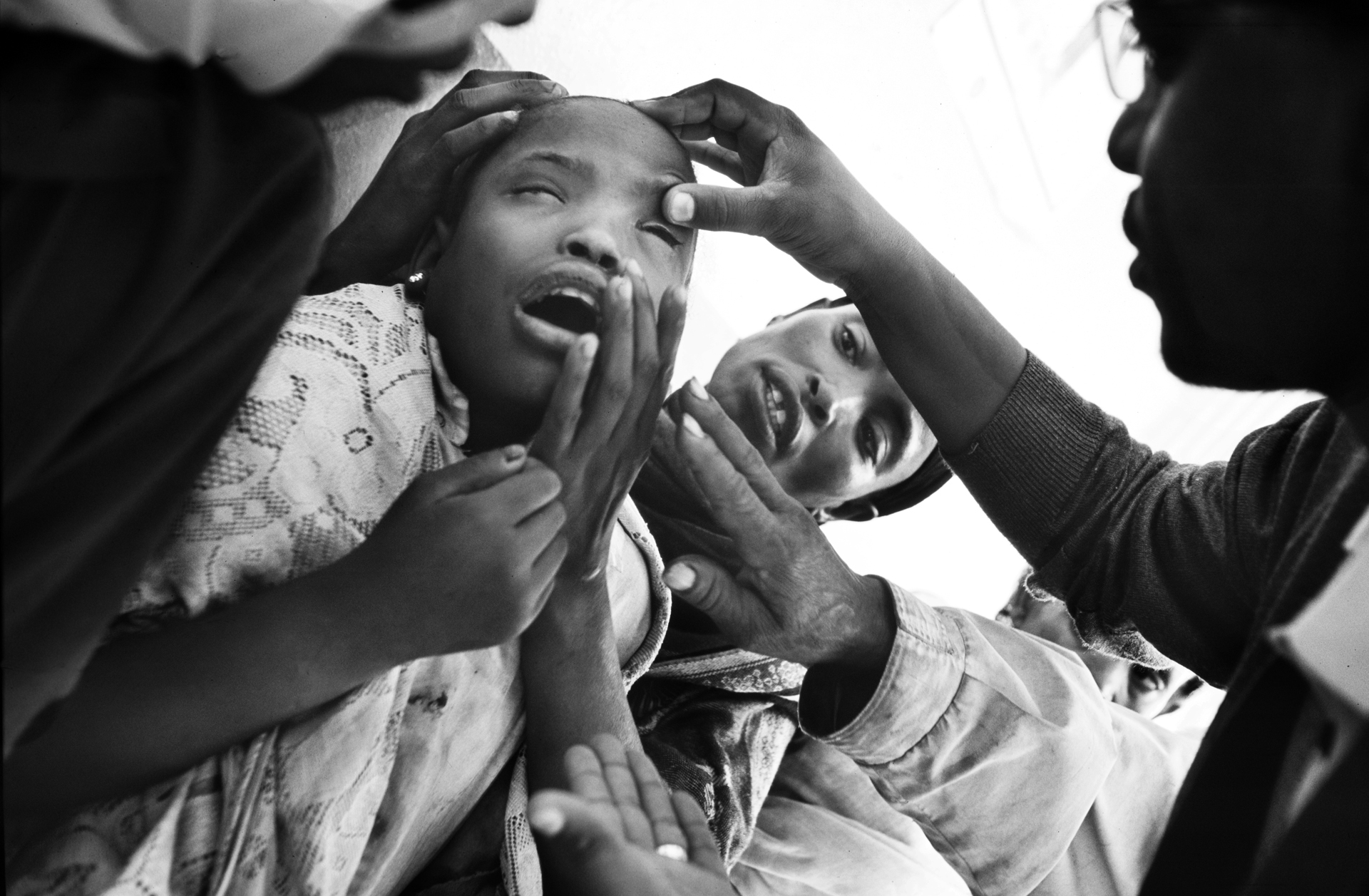
Aberash Abera, 10, has come with her mother to an Alaba District field clinic to see if she qualifies for surgery that will relieve the scractching of her cornea by inwardly-turned eyelashes. Aberash qualifies for surgery because she has more than five eyelashes on each eye turned inward. In the early stages of trachoma, a six-week course of antibiotics (with tetracycline, erythromycin, or sulfonamides) is prescribed, or a single dose of azithromycin.

Trachoma is the world’s leading cause of preventable blindness. In the regions of Ethiopia around Alaba, Soddo, and Gurage, where these images where taken, this disease was a pandemic during December, 2006.
Caused by fly-born bacteria, the infection turns the eyelids inward, scratching the eyeball, causing unbearable itching and scarring that inevitably leads to blindness if not treated, early, with what amounts to a dollar's worth of antibiotics, or one half-hour surgery performed by specialized nurses.
Today, 1.3 billion people still can’t access clean water. 2.6 billion people can’t access proper sanitation, and an estimated 14 million people die from treatable diseases. A staggering 2 billion more - almost a third of the world’s population - are infected and debilitated from treatable diseases. These shatter families, jolt economies into negative growth, and destabilize security and food supplies. Trachoma is one such disease.
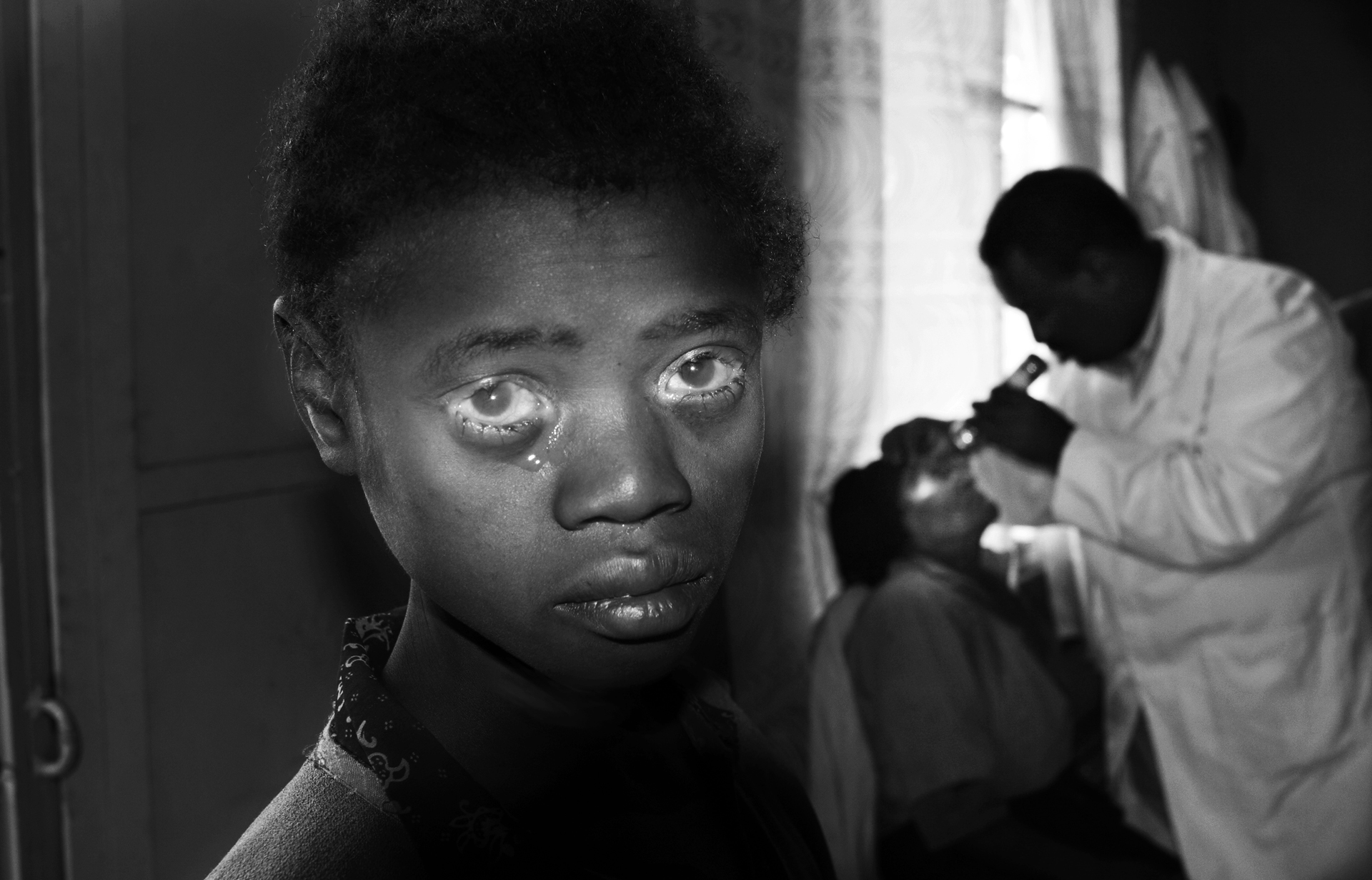
Melesech Achiso is 15. Her eyes have been infected many times, and her eyelashes have turned in and scarred the corneas. Her early symptoms were not treated. The follicles swelled into gray pimples, and small blood vessels grew inside her corneas. The only possibility for restoring her sight is a cornea transplant. She is here to see the one visiting ophthalmologist, who comes from Addis Ababa to Soddo once a year for one month. "This list is just too long for one surgeon" Dr. Getenet tells me. The chance of Melesech receiving a transplant is virtually none.

Sister Genet Bogala has performed over 30 trichiasis operations this week at her tin-roofed health post located in the middle of a cow pasture 150 km from Soddo. She is a nurse. Two years ago she was trained in a one-month course how to perform the surgery that arrests trachomatous trichiasis. It takes her about 20 minutes to fix one eye. Here she operates on Sherefa Ali, aged 30.

This “old man” is 62 years old. He requires medication for tuberculosis, and his blindness is likely from untreated trachoma. His family fears that they will be forced to move him to Ghanzi, off the farm where they all work, away from his family, because he is old and sick and a liability to the rancher.

Amaredtt Turq, 41, undergoes trichiasis surgery. The procedure involves making a half-inch incision through the upper eyelid, and then sewing it together to pull or "flip" the eyelashes away from the cornea, thus preventing further damage to the cornea. Sister Bogala tells me that they do surgery when more than five eyelashes are scratching the cornea. Up to that point they suggest antibiotics and epilation (hair removal) until more severe trachomatous trichiasis develops. After surgery the patients are given a topical antibiotic and told to come back in a week to have the stitches removed.

Caused by-fly born bacteria, the infection turns the eyelids inward, scratching the eyeball causing unbearable itching, and scarring that inevitably leads to blindness if not treated early with what amounts to a dollar of antibiotics, or a half-hour surgery performed by specialized nurses.
Today, 1.3 billion people still can’t access clean water. 2.6 billion people can’t access proper sanitation, and an estimated fourteen million people die from treatable diseases. A staggering two billion more - almost a third of the world’s population- are infected and debilitated from treatable diseases, which shatter families, jolt economies into negative growth, and destabilize security and food supplies. Trachoma is just one cause.

Soddo School for the Blind. These children are the lucky blind ones, because they get to learn brail, and read and write. The teachers are also blind. The Montessori method is used, “because of its tactile nature” says Teferi Kebede, who has been teaching at this school for nearly twenty years. Grade six teacher Ma Mo Madebo, 46, was the first student at this school.

During eight days in December, 2006, dozens of CIDA-supported Orbis workers spread out over six districts and 150 villages to administer 300,000 doses of Zithromax. The antibiotic given once a year over three years will protect against Chlamydia trachomatis, the bacteria that causes trachoma, for at least ten years.



